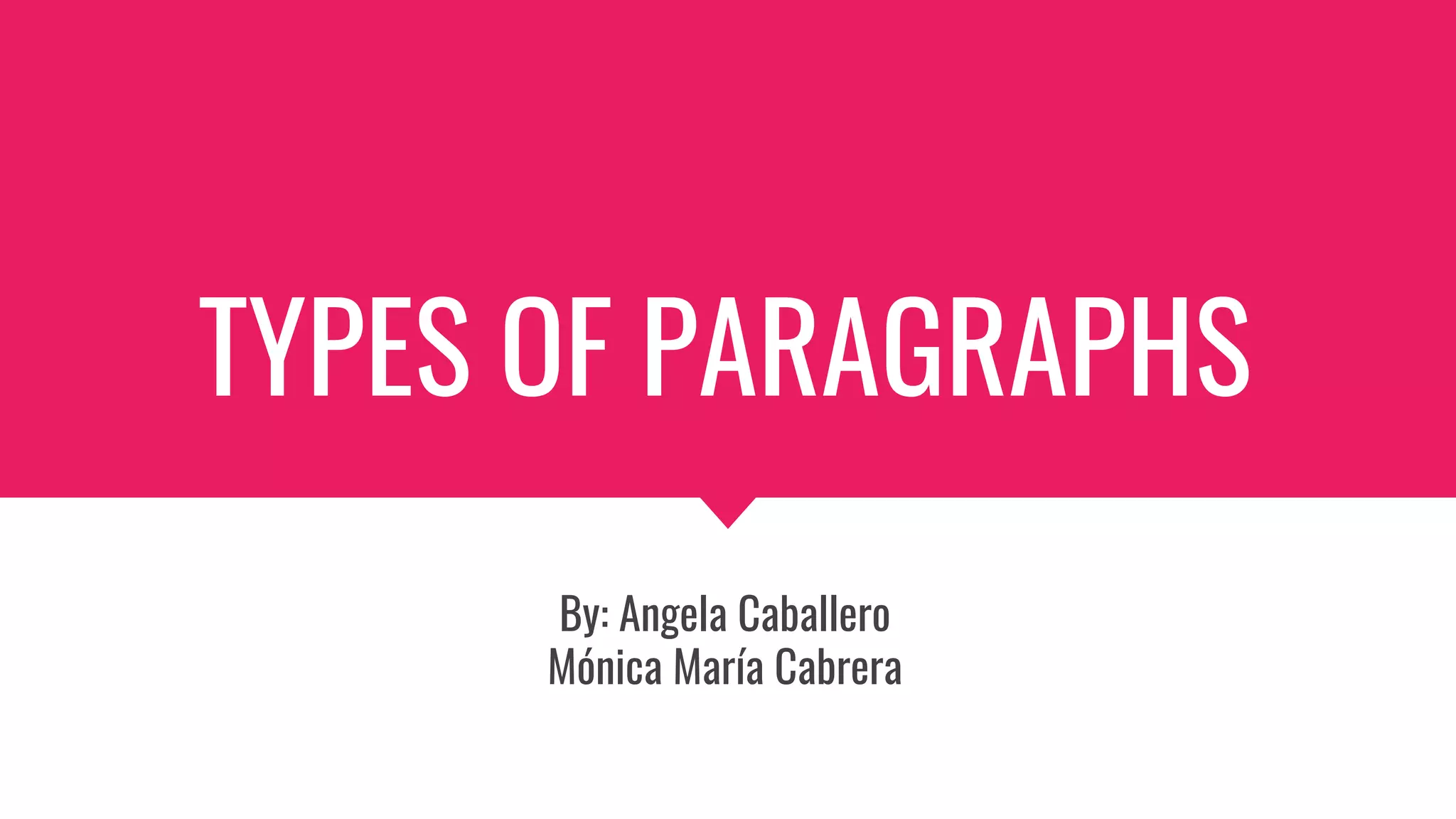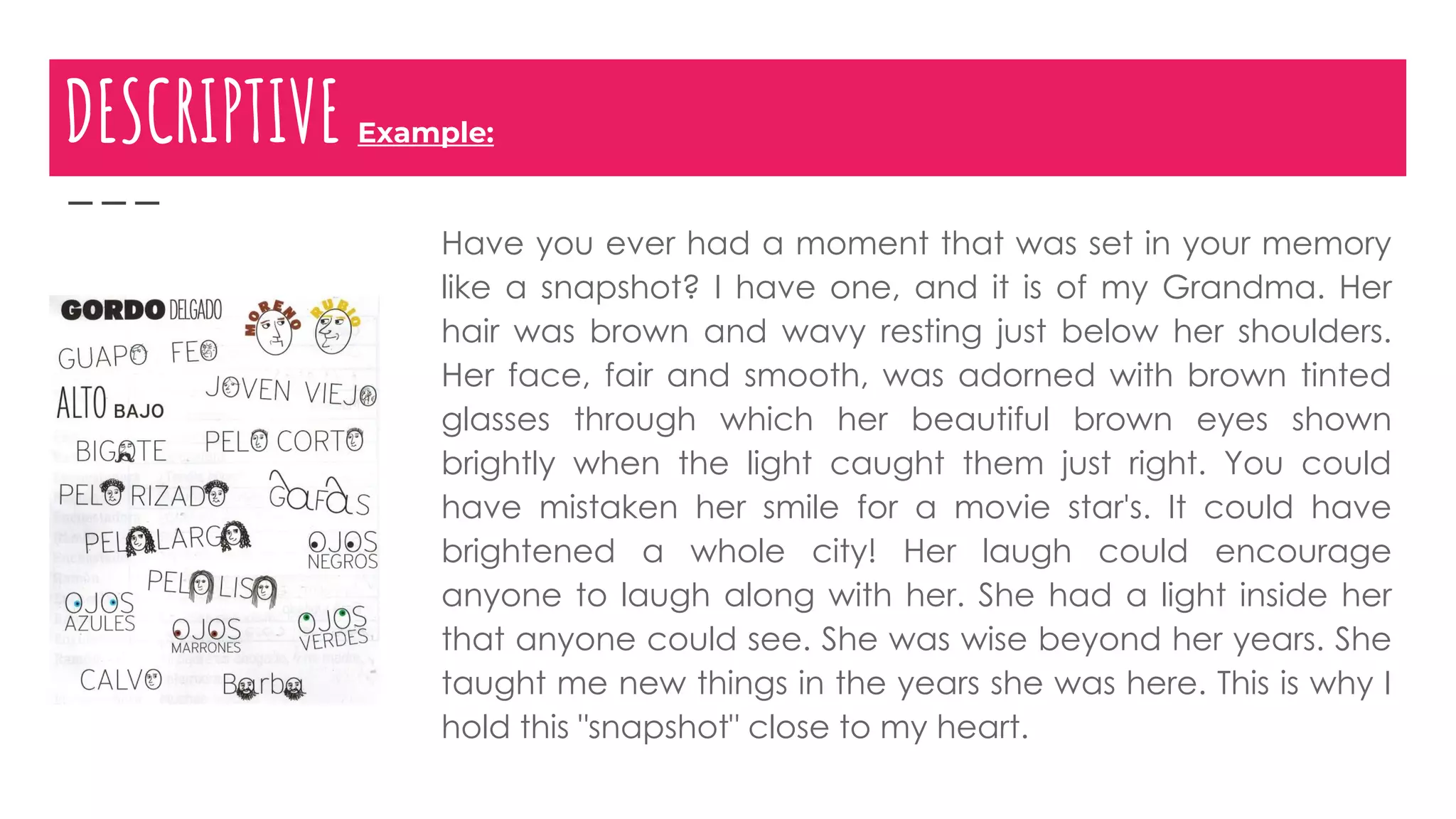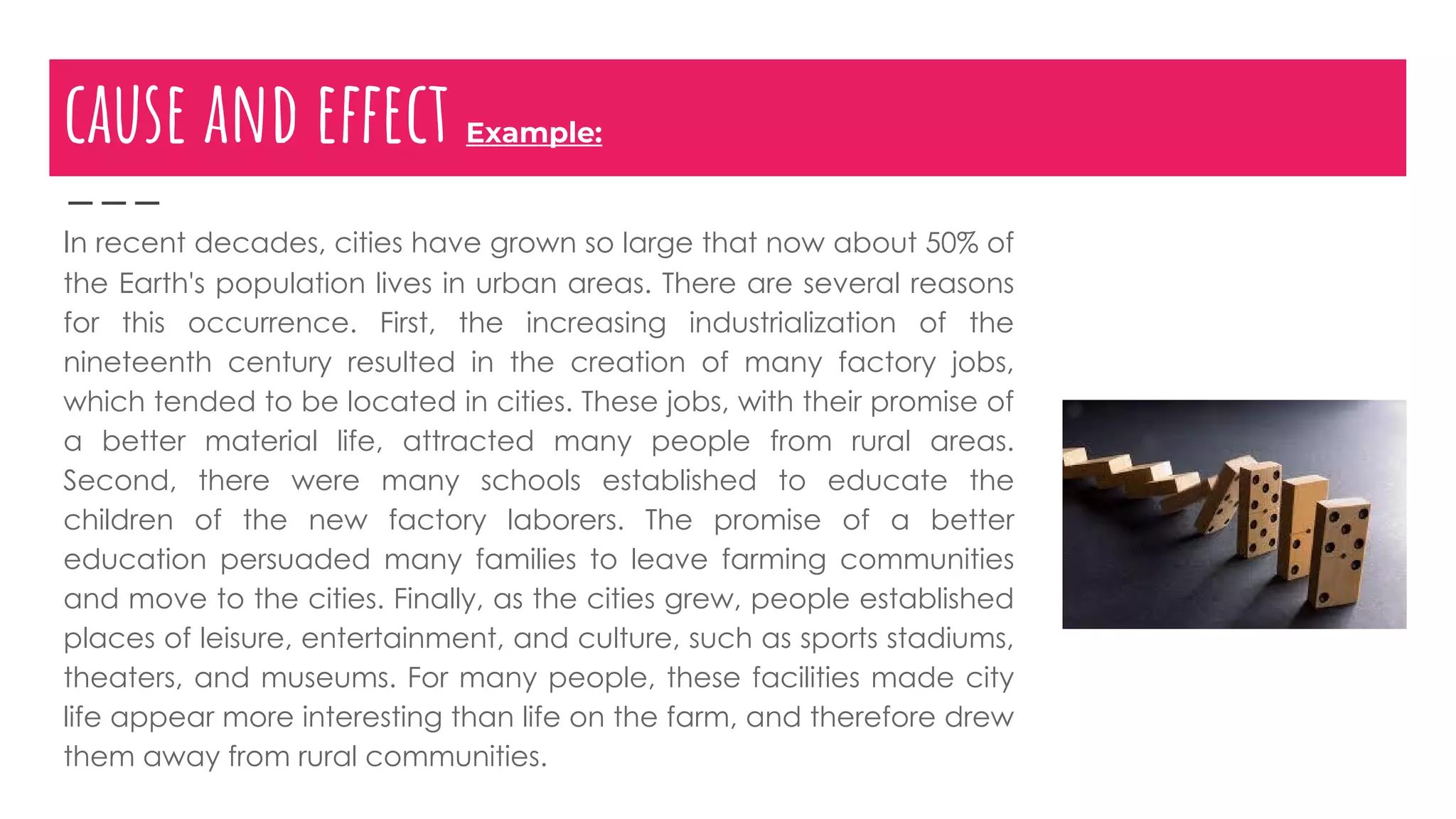This document provides examples of different types of paragraphs based on their content, location within a text, and logical structure. It begins by defining what a paragraph is and then discusses the most commonly used types of paragraphs by content, including descriptive, narrative, argumentative, persuasive, expository, and others. Examples are given to illustrate each type. The document also discusses types of paragraphs based on their location in a text, such as opening, transition, and closing paragraphs. Finally, it examines logical structures for paragraphs, like comparative, cause and effect, deductive, and inductive.















